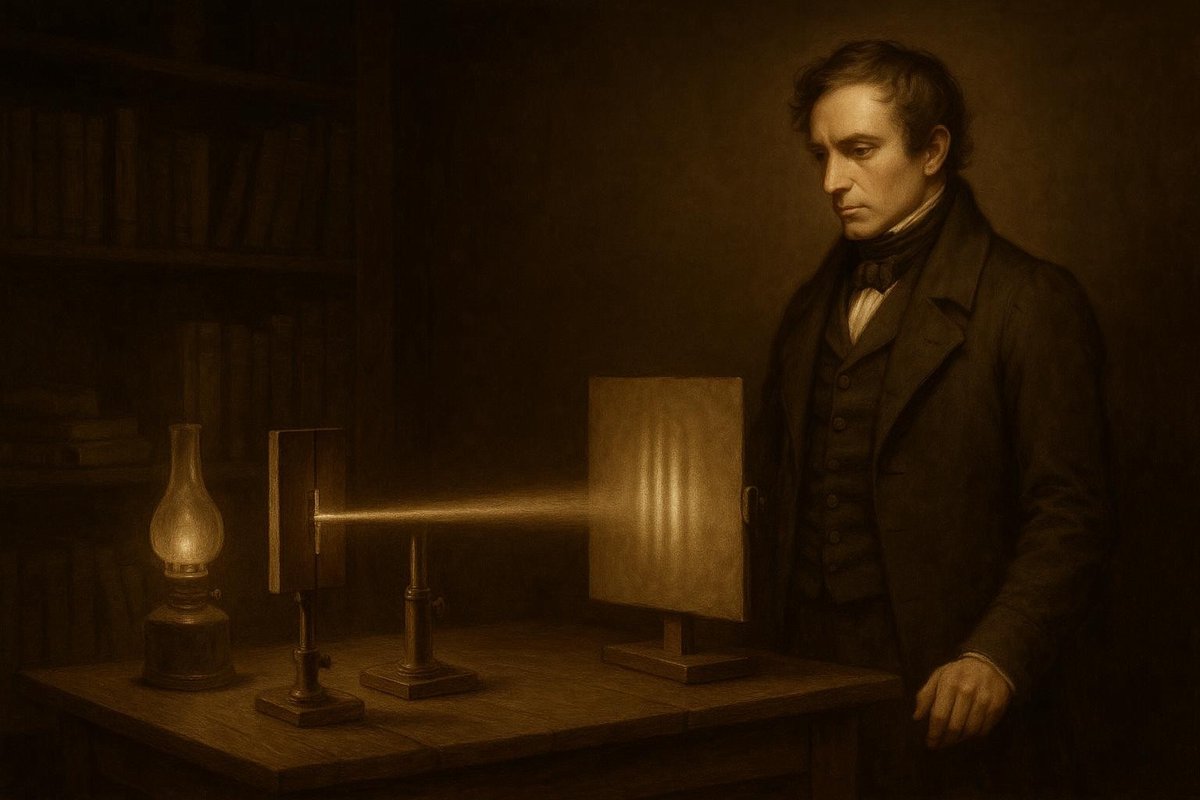
In our quest to understand the universe, the behavior of light stands as one of the most intriguing puzzles. Have you ever wondered how something as pervasive and essential as light could defy our expectations? The double-slit experiment, a cornerstone of quantum physics, offers not only answers but also deeper questions about our own nature of understanding.
Hypothesis & Context
Picture the early 19th century—a time when the nature of light was fiercely debated. Was it a wave or a particle? Many scientists, including Isaac Newton, believed in its particle nature. Yet, the idea of light as a wave was gaining momentum.
- The debate: Is light a wave, akin to ripples in a pond, or does it travel as a particle, like tiny bullets?
- Thomas Young proposed an experiment to test this duality, sparking curiosity and skepticism alike.
Young’s hypothesis suggested that if light were a wave, it would exhibit interference patterns when passed through two slits. However, if it behaved as particles, it would simply form two bands. This simple yet profound experiment sought to challenge existing perceptions, setting the stage for a scientific revolution.
This context allowed for an era of exploration where old ideas were often put to the test, reflecting humanity’s relentless curiosity. As we examine this experiment, consider how it parallels our own quests for truth and understanding in an ever-complex world.
Setup & Method
Imagine a dimly lit room, a beam of light, and an apparatus with two minute slits. This is where the magic happens. Young set up his experiment to let light pass through these slits onto a screen.
- Step 1: Shine a coherent light (like from a laser) at the slits.
- Step 2: Observe the pattern formed on the screen behind the slits.
- Step 3: Analyze the resulting interference or particle-like patterns.
The setup was deceptively simple, yet its implications were profound. As the light shone through, expectation was suspended. Would the light act as waves, overlapping and creating bands of light and dark, or manifest as distinct particles? The result would challenge both scientific and philosophical tenets of the time.
This method, though elementary, held the power to redefine reality itself, illustrating the delicate balance between observation and belief.
Results & Reactions
The results were nothing short of revolutionary. An interference pattern emerged, suggesting light behaves as a wave. But when observed more closely, it also showed signs of particle behavior.
- Interference pattern: Waves overlapping, creating light and dark stripes.
- Particle observation: Changing the observer altered the outcome, a concept that puzzled even the brightest minds.
“The experiment is so simple and clear that it forces us to confront the core of quantum theory,” remarked John Wheeler. It sparked debates, as classical physics couldn’t easily explain the duality. The reactions varied, from astonishment to skepticism, pushing the scientific community to re-examine entrenched beliefs.
It begged the question—does observation alter reality? This thought not only challenged physicists but philosophers and psychologists, drawing parallels to the subjective nature of human experience.
Implications
Beyond its scientific intrigue, the double-slit experiment has philosophical undertones. Light’s duality mirrored the dual nature of human understanding—are we not both rational and emotional?
- Analogy: Just as light defies categorization, so does human thought, straddling logic and emotion.
- The experiment invites reflection on how observation shapes perception, a theme resonant in psychology and art.
The implications extended beyond physics, influencing fields such as psychology and philosophy. It challenged the notion of objective reality, suggesting that observation might play a role in shaping existence itself. In this way, the double-slit experiment serves as a metaphor for human consciousness, urging us to ponder the limits and potential of our understanding.
As the experiment continues to inspire new generations, it remains a testament to the boundless curiosity that defines us, inviting us all to question, explore, and dream beyond the visible spectrum.
In conclusion, the double-slit experiment is not just a window into the nature of light but also a mirror reflecting our own duality. It challenges us to look beyond binaries and embrace complexity.
Fuel Someone Else’s Curiosity
If this exploration of light’s mysteries has sparked your curiosity, why not share it with someone else? We invite you to ponder these questions with friends, colleagues, or fellow enthusiasts. Together, let’s continue the dialogue and inspire each other to see the world in new ways.

Leave a Reply